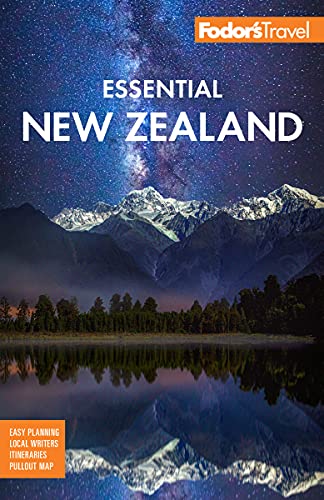Arthur's Pass National Park
The journey is the thing. This Homeric phrase rings so true for the drive along Highway 73 to Arthur’s Pass. In the heart of the Southern Alps, this area offers richly diverse landscapes: the beech forests and tussock grasslands of the eastern slopes give way to snowcapped mountains and wildflower fields; dense rain forests dominate the west.
Named Arthur's Pass for surveyor Arthur Dudley Dobson, who discovered the route over the Southern Alps in 1864, the east-west pass was long known to Māori hunters. Today, you can experience the thrilling mountain peaks, deep river gorges, and rain forest by car, train, or on foot. You can also spot kea, a native parrot, in the park and at Arthur's Pass Village.
Best Time to Go
November through March brings gorgeous wildflowers to the park. Ski at Temple Basin from late June to early October. Remember: with 6,562-foot peaks, the weather in the park can change for the worse anytime at this altitude.
Best Ways to Explore
By Car. Driving offers the flexibility to stop for hikes and sightseeing when you please. The road, extensively revamped in the 1990s, is a feat of engineering, particularly the Otira Viaduct. Five thousand cubic meters (176,573 cubic feet) of concrete were used to create the viaduct on a steep unstable foundation in an area prone to flash floods and earthquakes. As you navigate the turns, spare some thoughts for the men who spent backbreaking years creating it.
By Foot. Everything from 10-minute strolls to multiday hikes are available in the park. We recommend the Punchbowl Falls Track (one-hour return from Arthur's Pass Village) and Dobson Nature Walk (30-minute return), which follows a lovely loop at the summit of Arthur's Pass. Marvel at brilliantly colored alpine lichen splashed across boulders and cliff faces. Kea, wrybill (with bent beaks), and green bellbirds populate the park. Lucky visitors will spot the roroa—or great-spotted kiwi—that roam the steep terrain.
By Mountain Climbing. There are plenty of ways up the peaks of Arthur's Pass. Mountain climbing in the area is prone to changeable weather and many routes involve river crossings, so check in with the Department of Conservation before any endeavor and make sure you are well equipped and up to the challenge.
By Train. Take to the tracks and relax on board the TranzAlpine Scenic Journey. It takes you from Christchurch ("ChCh" to locals) to Greymouth in 4½ hours, through 16 tunnels and over 5 viaducts. The train has an open-air carriage, which provides breathtaking views of the plains, gorges, valleys, and beech forests.
Eco-Stays
As a guest at the Arthur's Pass Wilderness Lodge, you're invited to "walk the walk" and help remove invasive plants on nature hikes, and you're also welcome to do your own thing and take advantage of the extensive trails throughout the property. The owners are passionate about the conservation of this alpine environment and eager to share their knowledge with you. The lodge itself is built of local stone and wood. There's no need to worry about your cuisine's "food miles"—the delectable slow-cooked lamb on your plate was raised on the farm out the window. A more wallet-friendly but equally environment-conscious accommodation is the Mountain House Arthur’s Pass YHA. The operators practice "responsible tourism" down to the last detail, using compact fluorescent lighting, organically based cleansers, recycled paper products, and nonnative firewood. They also initiated and run the recycling effort for the entire town.




